- Balanitis is inflammation of the glans penis, often due to infections, poor hygiene, or irritation [1].
- Natural options like aloe vera, coconut oil, tea tree oil, and saltwater soaks may help soothe discomfort in mild cases [2][3][4][5].
- Effectiveness depends on the underlying cause—fungal and bacterial cases may respond, but viral causes generally require medical attention [1][6].
- If symptoms last more than a week, worsen, or involve fever or recurring episodes, see a doctor [1].
- Combining natural and medical treatments can enhance recovery, but proper diagnosis is crucial to choosing the right approach.
- The Terrasil® Balanitis Relief Kit offers a homeopathic and natural ingredient-based self-care option. See Drug Facts below.
Understanding Balanitis and Natural Treatment Options
What is Balanitis?
Balanitis refers to inflammation of the glans penis (head of the penis), often marked by redness, irritation, swelling, and discomfort [1]. It primarily affects uncircumcised individuals and can result from fungal or bacterial infections, poor hygiene, contact dermatitis, or underlying conditions such as diabetes [1][6].
Causes may include:
- Fungal or bacterial overgrowth
- Poor hygiene or harsh soaps
- Skin conditions like eczema or psoriasis
- Allergic reactions
- STIs such as herpes simplex
Common Symptoms of Balanitis:
- Redness and swelling of the glans
- Itching or burning
- Painful urination
- Discharge with odor
- Tight foreskin (phimosis)
- Small sores (in severe cases)
While prescription and OTC medications are standard treatments, many individuals with mild or early symptoms consider natural skin-supportive options to help soothe discomfort or irritation [2].
That said, identifying the root cause of balanitis is critical. Fungal infections (especially Candida albicans) are common, but irritation, bacterial overgrowth, or even viral infections (like herpes simplex virus) may also be involved [1].
Note: No home remedy should replace medical care when symptoms are severe, persistent, or uncertain in cause.
Why Some People Prefer Natural Remedies
While conventional treatments like antifungal or antibiotic creams are widely used and effective, some individuals prefer natural alternatives due to concerns about:
- Synthetic ingredients or preservatives
- Skin sensitivity
- Interest in holistic wellness
- Long-term recurrence or chronic irritation
Natural remedies aim to maintain skin moisture, reduce irritation, and provide gentle support using plant-based or mineral-derived ingredients.
The Importance of Identifying the Cause Before Choosing a Remedy
Because balanitis may be caused by fungal, bacterial, viral, or irritant factors, treatment should align with the root issue. For example:
- Fungal: Often linked to Candida, especially in diabetic or immunocompromised individuals
- Bacterial: May stem from overgrowth in moist environments
- Irritant/allergen: Triggered by harsh soaps, latex, or fragrances
- Skin condition: Psoriasis or eczema may lead to chronic inflammation
Identifying the cause with a healthcare provider ensures a more targeted and effective plan.
Effective Natural Remedies for Balanitis Relief

Natural approaches may help soothe mild irritation or provide comfort during recovery. The remedies below are not medical treatments but may support healthy skin and reduce discomfort when used appropriately.
1. Aloe Vera
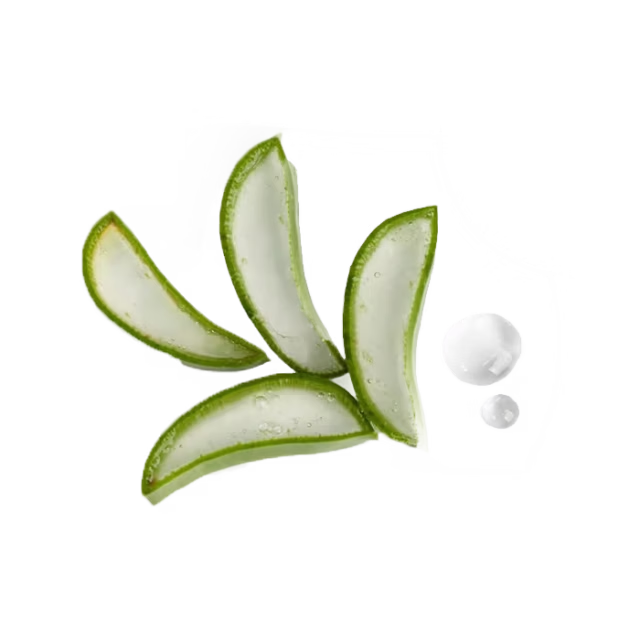
Use: Skin hydration and irritation relief.
Effectiveness: May soothe mild inflammation and itching. Not a treatment for infection.
Scientific Support: Aloe vera has anti-inflammatory and wound-healing properties [2].
How to Use: Apply pure, unscented aloe vera gel to clean, dry skin twice daily.
2. Coconut Oil
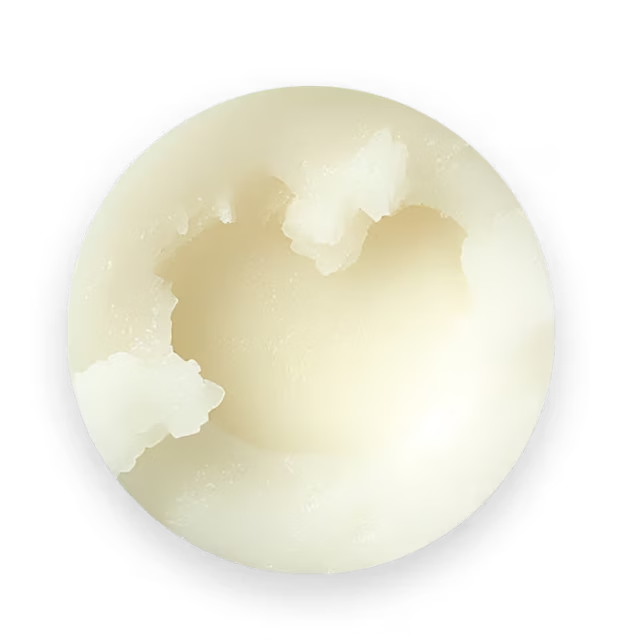
Use: Moisturizer; supports barrier function.
Effectiveness: May help reduce mild fungal activity and prevent dryness.
Scientific Support: Virgin coconut oil has shown antifungal activity against Candida species [3].
How to Use: Apply a thin layer of virgin coconut oil to the glans 2–3 times daily.
3. Apple Cider Vinegar (ACV)
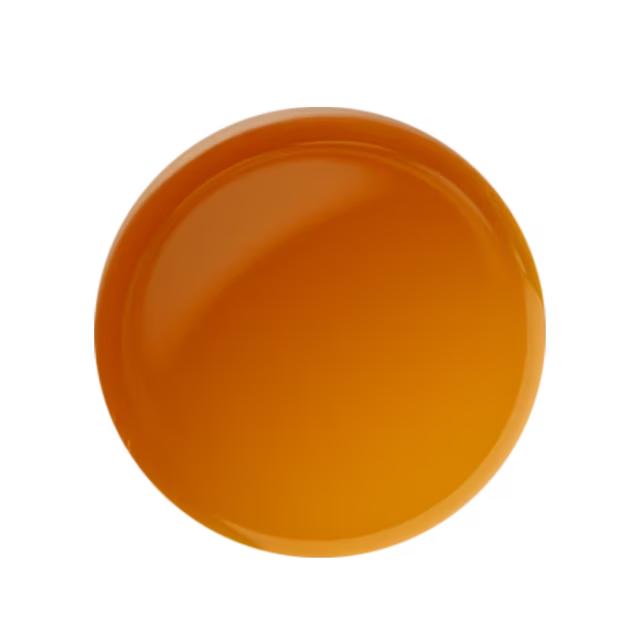
Use: Mild antimicrobial cleansing (only when diluted).
Effectiveness: May reduce microbial load when diluted; not a standalone treatment.
Scientific Support: ACV has shown antibacterial and antifungal properties in vitro [4].
How to Use: Mix 1 tbsp ACV with 1 cup of warm water. Gently dab the area with a clean cloth. Rinse and pat dry. Avoid using undiluted ACV.
4. Saltwater Baths
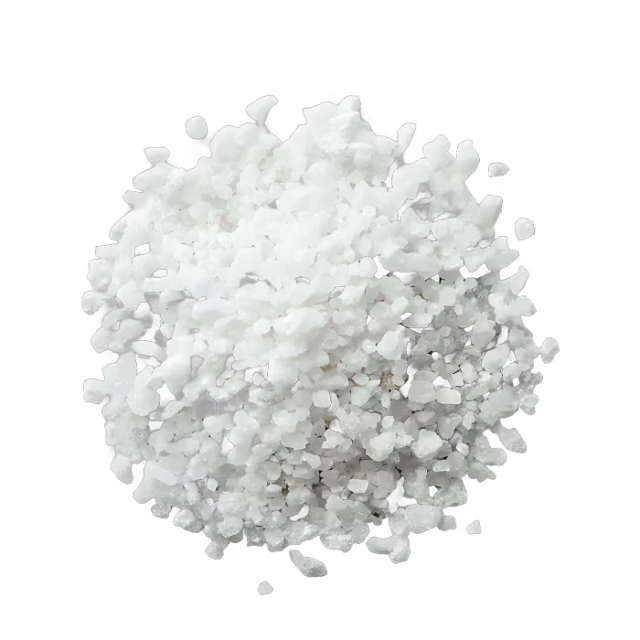
Use: Cleansing and soothing irritated skin.
Effectiveness: Helps reduce irritation and cleanse the area [5].
Scientific Support: Saline may support wound cleansing and reduce microbial colonization [5].
How to Use: Dissolve 1 tsp sea salt in a sitz bath or small basin. Soak for 10–15 minutes daily.
5. Tea Tree Oil (Diluted)
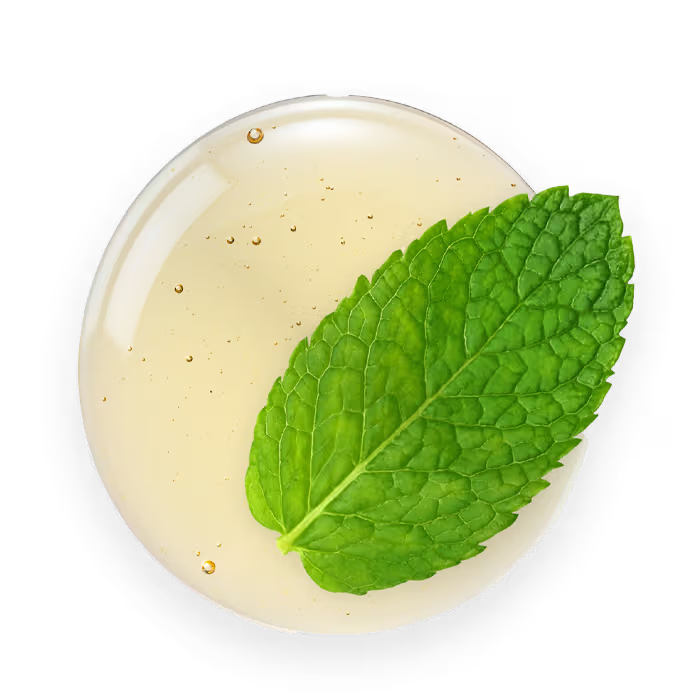
Use: Antimicrobial support for fungal-prone areas.
Effectiveness: May help inhibit fungal growth when properly diluted.
Scientific Support: Tea tree oil has antifungal and antibacterial properties [6].
How to Use: Dilute a few drops in a carrier oil (e.g., coconut, jojoba). Apply once daily. Do not use undiluted.
DIY Homemade Balanitis Balm Recipe
Ingredients:
- 2 tbsp Coconut oil (carrier and antifungal)
- 1 tbsp Pure aloe vera gel (soothing)
- 5 drops Tea tree oil (antifungal, diluted)
- 1 tsp ACV (pH support)
- 1/2 tsp unrefined Sea salt (cleanser)
Instructions:
- Slightly warm the coconut oil to liquefy.
- Mix in aloe vera gel and stir to blend.
- Add diluted tea tree oil and ACV.
- Mix in sea salt until dissolved.
- SStore in a sterilized jar. Apply a thin layer to clean, dry skin 1–2 times daily.
Caution:
Not a substitute for medical care. Discontinue if irritation worsens. Avoid use on open sores.
Terrasil® Balanitis Relief Kit: A Natural-Based, Homeopathic Option
When it comes to over-the-counter solutions for balanitis relief, the Terrasil® Balanitis Relief Kit stands apart from both home remedies and conventional products on the market. While natural DIY treatments like coconut oil or aloe vera can help soothe irritated skin, they lack the depth and structure of a professionally formulated product. Terrasil not only combines nature-derived ingredients but also includes homeopathic compounds recognized by the Homeopathic Pharmacopoeia of the United States (HPUS), making it a unique option for those seeking a non-prescription, skin-soothing solution
What Makes Terrasil’s Balanitis Relief Kit Different and Better?
- Dual-Action Formula: Unlike homemade remedies, which may offer hydration or mild antimicrobial benefits, Terrasil’s Balanitis Ointment and soap combines homeopathic ingredients like Sulfur 1X HPUS and Symphytum Officinale 1X HPUS with soothing natural oils and patented Activated Minerals® for a more comprehensive approach to skin comfort.
- Scientifically Informed Formulation: Every ingredient in Terrasil’s ointments are chosen not only for its traditional use, but also its safety and synergy with other ingredients. This kind of design cannot be achieved in homemade balms.
- Consistent Quality: DIY remedies are inconsistent in concentration, hygiene, and application. Terrasil® is manufactured under controlled conditions in the USA, ensuring reliability and safety with every batch.
- Ease and Convenience: No need to source, mix, or store ingredients. The Terrasil® Balanitis Relief Kit is shelf-ready and travel-friendly.
- Trusted by Thousands: Terrasil® Balanitis Relief Kit has earned over 1,000 five-star reviews on Amazon as of mid-2025, with users praising it for fast relief, comfort, and effectiveness when other options failed.
Claims are based on traditional homeopathic practice, not accepted medical evidence. Not evaluated by the FDA
For individuals seeking a ready-made formula, the Terrasil® Balanitis Relief Kit combines a gentle cleansing bar and a homeopathic ointment made with ingredients traditionally used to support skin relief.
- Cleansing Bar: Contains calendula and natural oils to gently cleanse sensitive skin
- Relief Ointment: Homeopathic ingredients include:
- Sulfur 1X HPUS
- Symphytum Officinale (Comfrey) 1X HPUS
- Mineral Blend: Includes magnesium oxide, silver stearate, and zinc oxide
Claims are based on traditional homeopathic practice, not accepted medical evidence. Not evaluated by the FDA
Get fast and natural relief for your balanitis with terrasil® here.
Drug Facts Panel
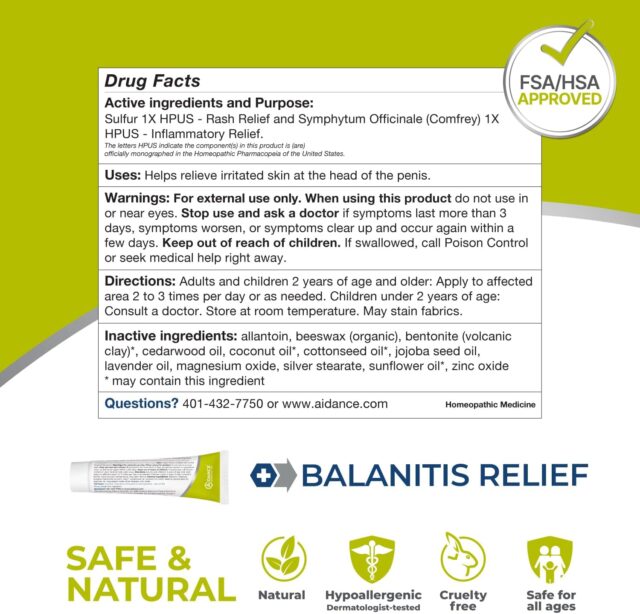
Terrasil® vs. Natural Home Remedies: Comparison Chart
Remedy
Applicable Context
Properties
Remedy
Skin irritation, dryness, discomfort
Homeopathic + natural ingredients to support relief
Remedy
Aloe Vera
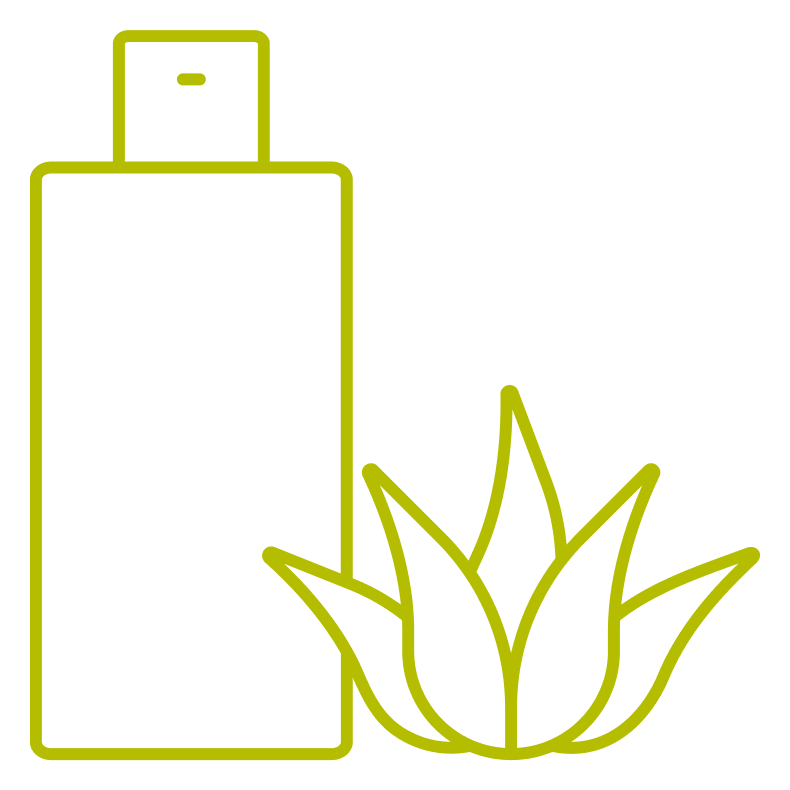
Irritant-related symptoms
Cooling and hydrating
Remedy
Coconut Oil
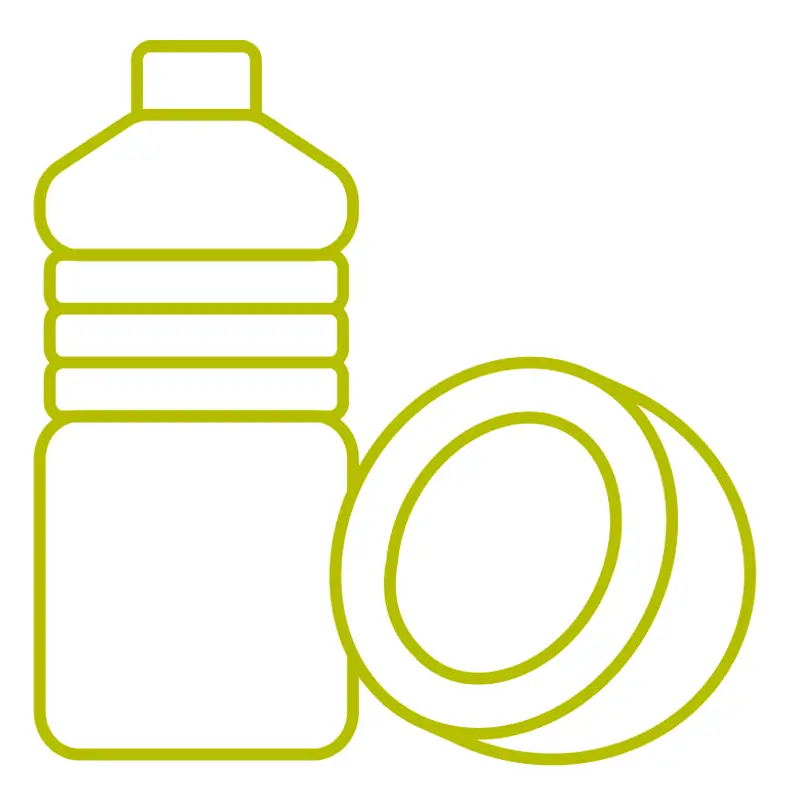
Mild fungal-prone skin
Moisturizing and protective
Remedy
Apple Cider Vinegar (diluted)
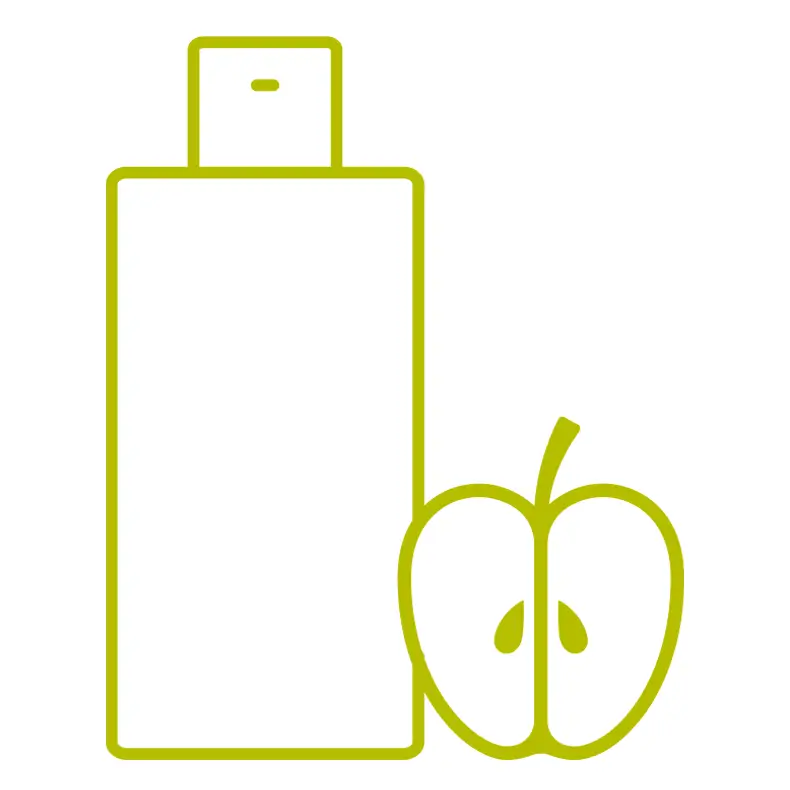
Skin cleansing (use with caution)
May support microbial balance
Remedy
Saltwater Baths
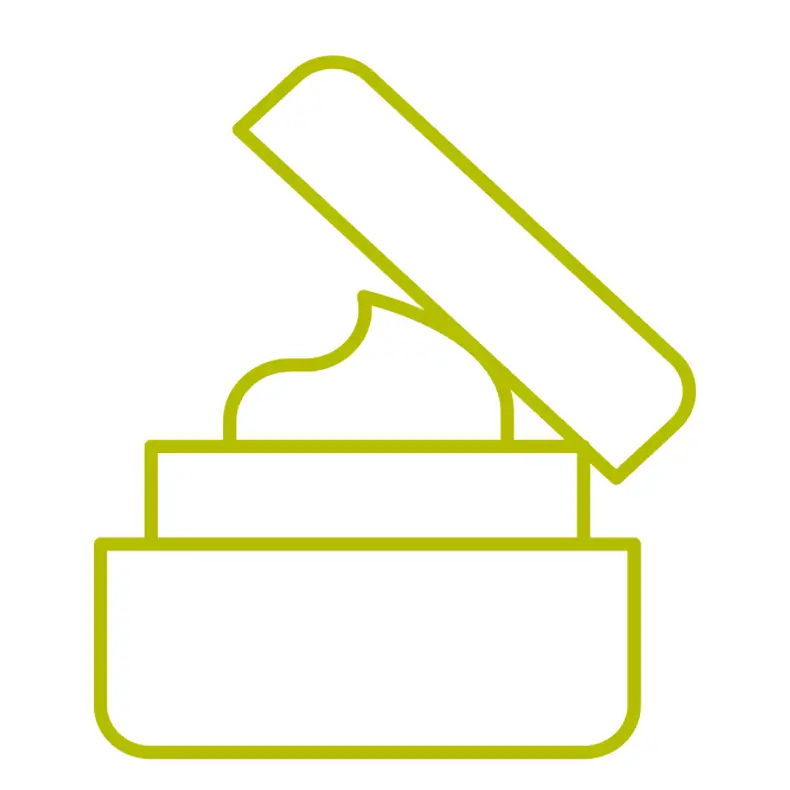
General skin cleansing and mild irritation
Soothing and cleansing
Remedy
Tea Tree Oil (diluted)
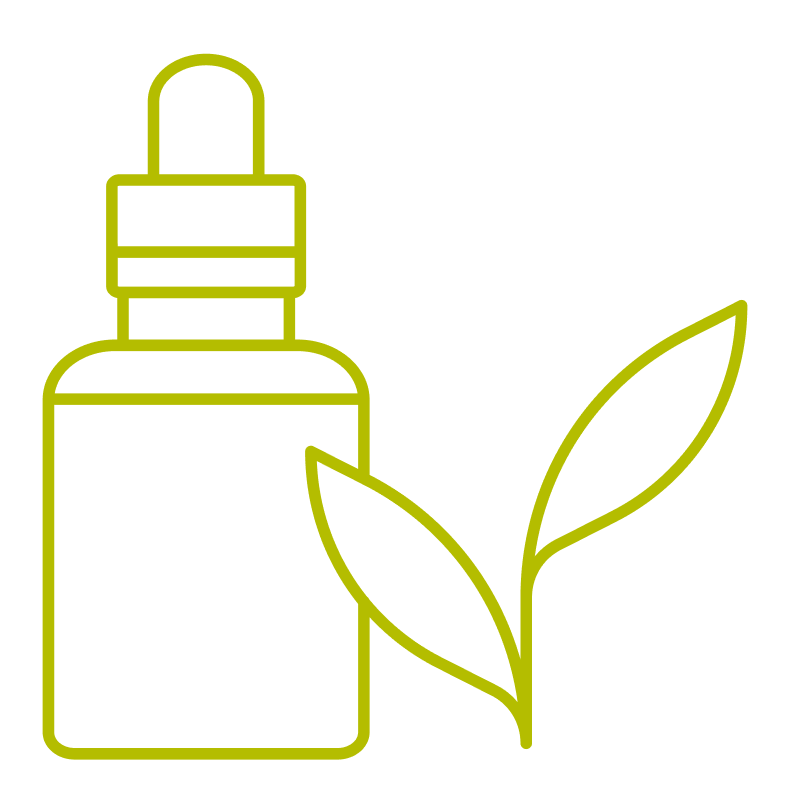
Mild fungal-prone areas
Antimicrobial (must be diluted)
When to Use Medical Treatments Instead

You should consult a healthcare provider if:
- Symptoms last longer than 7 days
- There is significant pain, swelling, or discharge
- Fever or spreading redness appears
- You experience recurring episodes
- You have diabetes or a weakened immune system [1][6]
Common Medical Treatments:
- Antifungal creams (e.g., clotrimazole)
- Antibiotic (e.g., mupirocin)
- Mild corticosteroids (if caused by dermatitis)
Can Balanitis Go Away on Its Own?
Mild irritation or hygiene-related symptoms may resolve with improved care. However, untreated fungal or bacterial causes may worsen, so follow up with a provider if symptoms persist.
What is the Fastest Natural Cure for Balanitis?
There is no FDA-approved “natural cure” for balanitis. Coconut oil and diluted tea tree oil may provide comfort for mild fungal-related symptoms, but they are not cures and should not replace medical treatment.
However, there is the Terrasil® Balanitis Relief Kit, which contains homeopathic ingredients such as Sulfur 1X HPUS and Symphytum Officinale 1X HPUS that are traditionally used to support skin health and soothe irritation in sensitive areas. These ingredients are listed in the Homeopathic Pharmacopoeia of the United States (HPUS), and the formulation is designed to offer a gentle, non-prescription option for those seeking relief. The product has also received strong customer feedback, including over 1,000 five-star reviews on Amazon as of mid-2025.
Users frequently report noticeable comfort and symptom improvement within days of consistent use. While individual results vary, this real-world social proof helps validate the product’s role as a supportive self-care option for those seeking a non-prescription, natural approach to relief., where users frequently report noticeable comfort and symptom improvement within days of consistent use.
While individual results vary, this real-world social proof helps validate the product’s role as a supportive self-care option. These ingredients are listed in the Homeopathic Pharmacopoeia of the United States (HPUS), and the formulation is designed to offer a gentle, non-prescription option for those seeking relief.
Are There Risks to Using Home Remedies?
Yes. Some individuals may react to natural ingredients. Always patch-test and consult a provider, especially if you have sensitive skin or other medical conditions.
Conclusion
Treating balanitis effectively requires understanding the underlying cause. While natural ingredients may help soothe mild irritation, they are not a substitute for proper diagnosis and treatment. Combining good hygiene, natural skin support, and professional care when needed is the most responsible approach.
References
- Mayo Clinic. “Balanitis: Symptoms and Causes.” MayoClinic.org, 2023.
- Vogler BK, Ernst E. “Aloe vera: A systematic review.” J Clin Pharm Ther, 1999.
- Ogbolu DO et al. “In vitro antimicrobial properties of coconut oil.” J Med Food, 2007.
- Arslan D et al. “Antimicrobial effects of apple cider vinegar.” Scientific Reports, 2021.
- Mboto CI et al. “Evaluation of saline solutions in wound care.” Int J Microbiol, 2012.
- Carson CF et al. “Tea tree oil: Antimicrobial properties.” Clin Microbiol Rev, 2006.



